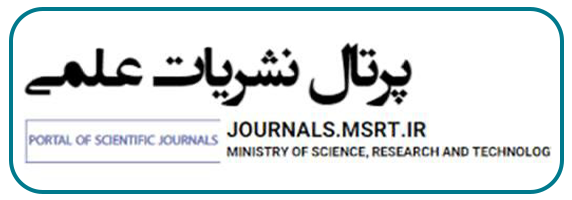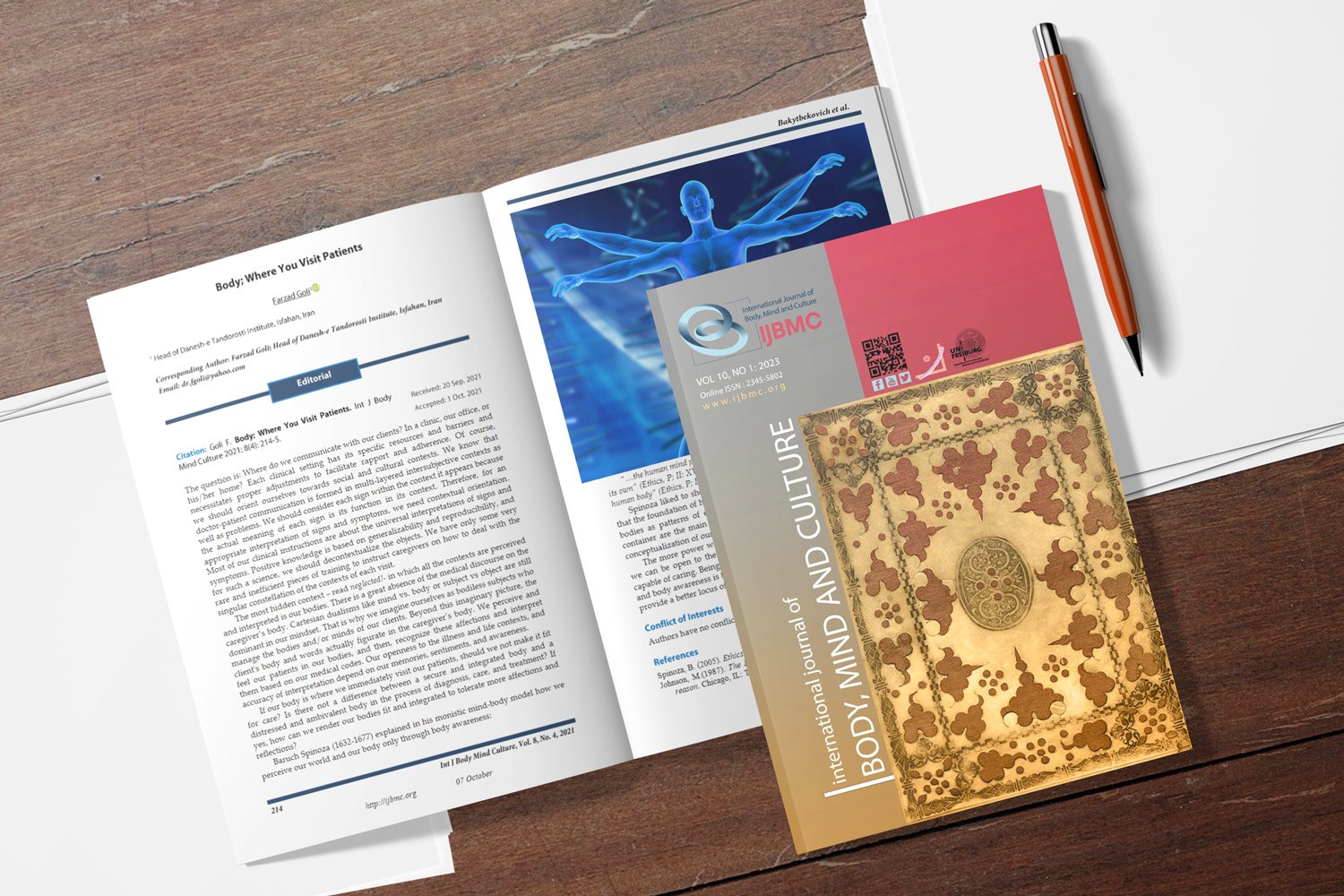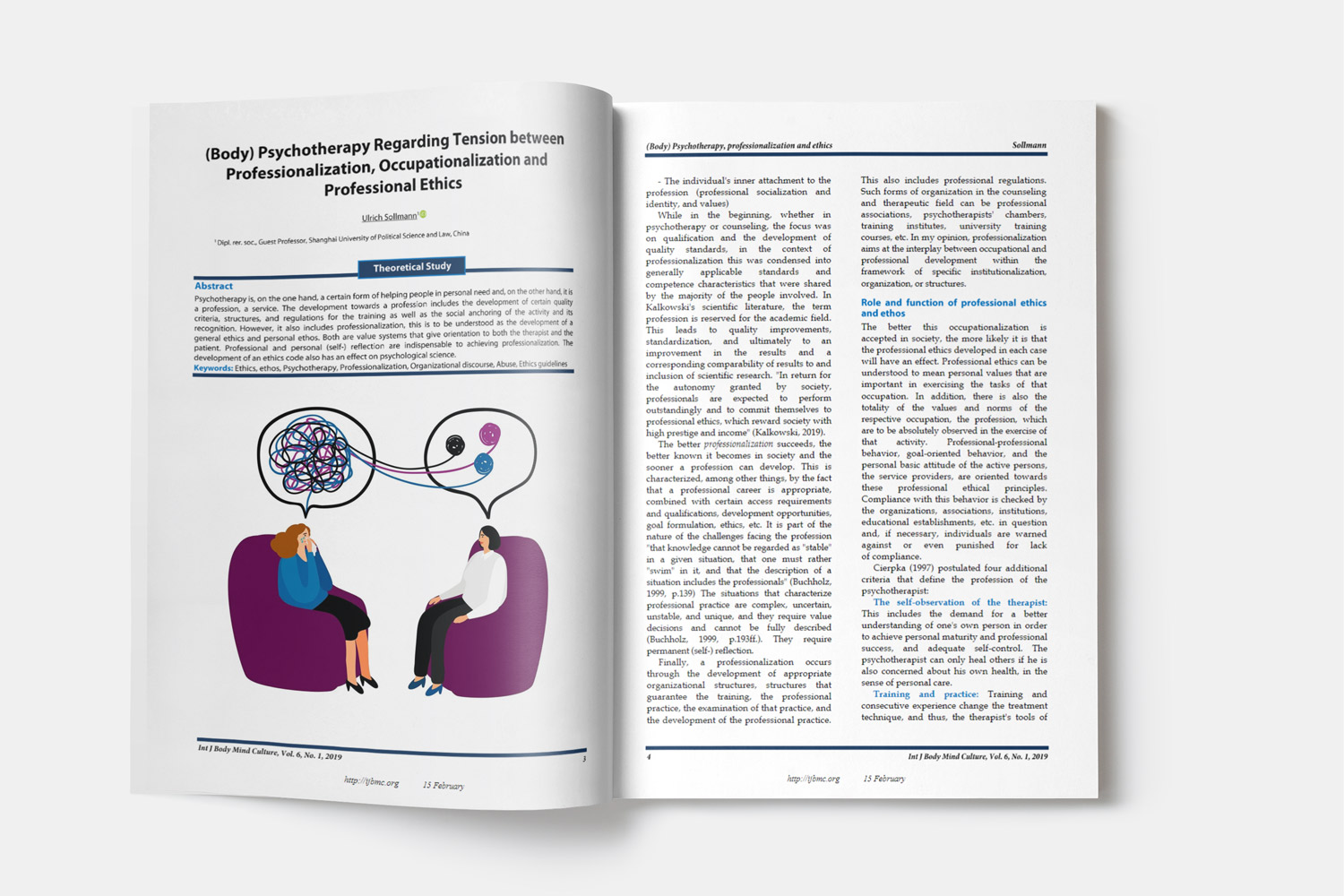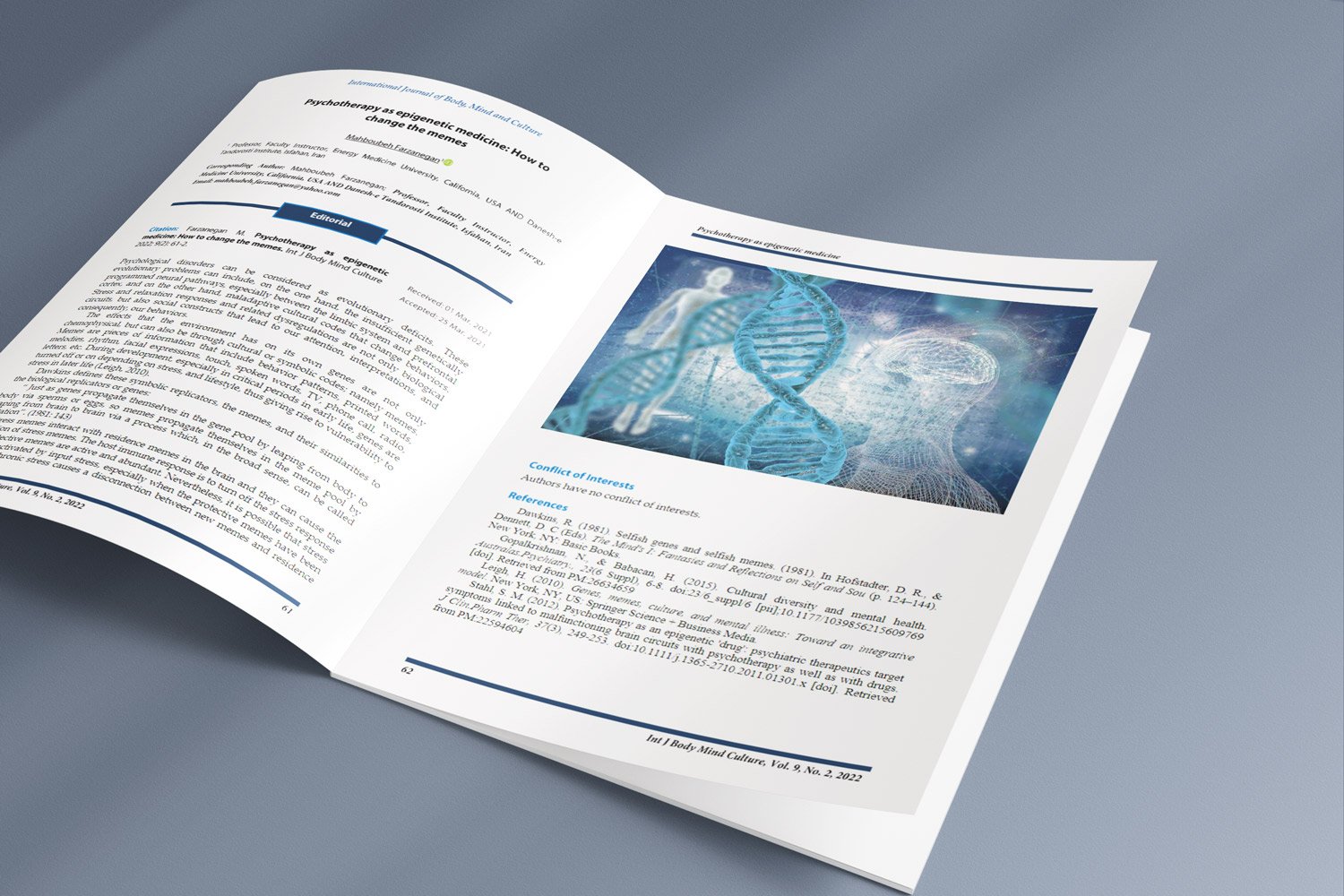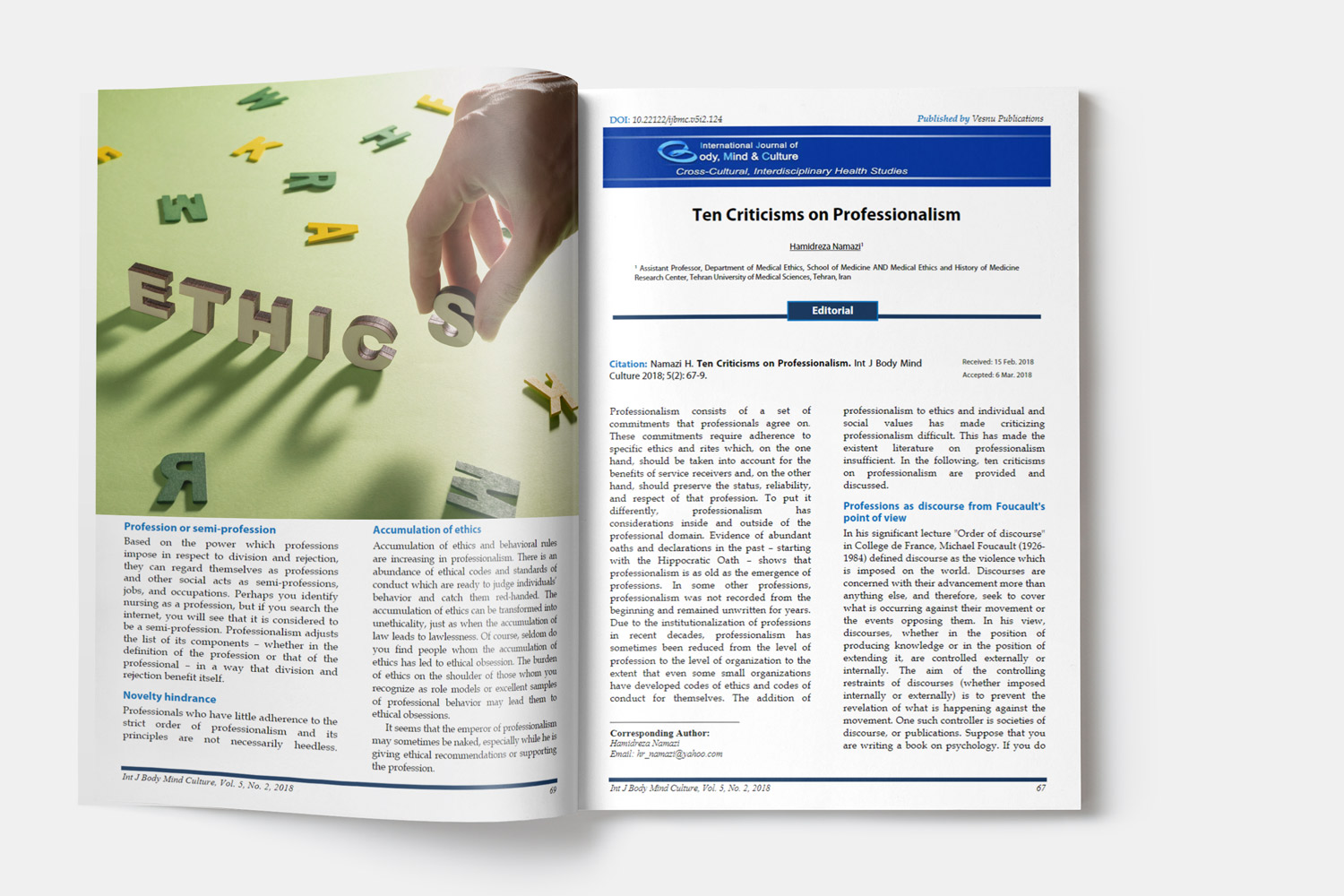Investigating the Relationship between Job Burnout and Self-Compassion and Tolerance of Ambiguity in Personnel of a Store
Job burnout in personnel of a store
Downloads
Background: Job burnout is one of the most important factors that affect store personnel’s job turnover and service quality. This research was conducted to investigate the relationship between job burnout and tolerance of ambiguity and self-compassion among store personnel.
Methods: In this correlational study, 135 employees of a branch of chain stores in Isfahan, Iran, were selected as the participants using simple random sampling method. Data were collected using the Maslach Burnout Inventory (MBI) (Maslach & Jackson, 1981), Self-Compassion Scale (SCS; Neff, 2003), and Distress Tolerance Scale (DTS; Simons & Gaher, 2005). Data were analyzed using the Pearson correlation coefficient and multivariate regression in SPSS software, at significance level of 0.05.
Results: results showed that there was a positive correlation between job burnout and the variables of self-kindness (r = 0.34), sense of common humanity (+0.226), and isolation (+0.226), and a negative correlation between job burnout and the variables of self-judgment (-0.336) and mindfulness (-0.318) (P < 0.05). According to the results of the regression analysis, the two variables of self-compassion and tolerance of ambiguity can predict 0.011 job burnout among these people.
Conclusion: Based on the results of the present study, it is concluded that there is a negative association between some dimensions of compassion, such as self-judgment and mindfulness, and job burnout. Thus, the occurrence of job burnout can be prevented by increasing the above two variables in this occupational population.
Downloads
Abolghasemi, A., & Narimani, M. (2005). Psychological tests. Ardabil, Iran: Bagh-e-Rezvan Publications.
Afshani, S. A., & Abooei, A. (2017). Relationship between Emotional Intelligence and Self- compassion among Yazd University Students. Journal of Applied Psychological Research, 8(3), 47-68. doi:10.22059/JAPR.2017.65035 [doi].
Ahmadi Tahour Soultani, M., & Najafi, M. (2011). The comparison of metacognitive beliefs and ambiguity tolerance among addicted, smokers and normal individuals. Journal of Clinical Psychology, 3(4), 59-67. doi:10.22075/JCP.2017.2071 [doi].
Ahmadpour Dariani, M., & Ebrahimi, T. (2008). A comparative study on ambiguity tolerance in entrepreneurs and no entrepreneurs. Psychological Sciences, 7(26), 176-189.
Alharbi, J., Wilson, R., Woods, C., & Usher, K. (2016). The factors influencing burnout and job satisfaction among critical care nurses: a study of Saudi critical care nurses. J Nurs.Manag., 24(6), 708-717. doi:10.1111/jonm.12386 [doi]. Retrieved from PM:27189515
Azizi A, Mirzaei A, & Shams J. (2010). Correlation between distress tolerance and emotional regulation with students smoking dependence. Hakim J, 13(1), 11-18. Retrieved from http://hakim.tums.ac.ir/article-1-608-en.html
Basharpoor, S., Khosravinia, D., Atadokht, A., Daneshvar, S., Narimani, M., & Massah, O. (2014). The role of self-compassion, cognitive self-control, and illness perception in predicting craving in people with substance dependency. Practice in Clinical Psychology, 2(3), 155-164.
Breines, J. G., & Chen, S. (2012). Self-Compassion Increases Self-Improvement Motivation. Pers Soc Psychol Bull, 38(9), 1133-1143. doi:10.1177/0146167212445599 [doi].
Broomandnasab, M., & Shokrkon, H. (2009). Examining simple and multiple relationships of self–efficacy, locus of control, tolerance of ambiguity with entrepreneurship. Journal of Psychological Achievements (Journal of Education & Psychology), 16(1), 27-50.
Brown, H. D. (1993). Principles of language learning and teaching (3rd ed). Englewood Cliffs, NJ: Prentice Hall/Regents.
Canadas-De la Fuente, G., San Luis, C., Lozano, L., Vargas, C., Garcia, I., & Fuente, E. (2014). Evidence for factorial validity of Maslach Burnout Inventory and burnout levels among health workers. Revista Latinoamericana de Psicologia, 46(1), 44-52. doi: 10.1016/S0120-0534(14)70005-6 [doi].
Chio, F. H. N., Mak, W. W. S., & Yu, B. C. L. (2021). Meta-analytic review on the differential effects of self-compassion components on well-being and psychological distress: The moderating role of dialecticism on self-compassion. Clin Psychol Rev., 85, 101986. doi:S0272-7358(21)00029-5 [pii];10.1016/j.cpr.2021.101986 [doi]. Retrieved from PM:33667941
Coaston, S. (2017). Self-care through self-compassion: a balm for burnout. The Professional Counselor, 7(3), 285-297. doi:10.15241/scc.7.3.285 [doi].
Crocker, J., & Canevello, A. (2008). Creating and undermining social support in communal relationships: The role of compassionate and self-image goals. Journal of Personality and Social Psychology, 95(3), 555-575. doi:10.1037/0022-3514.95.3.555 [doi].
Esalati, P., Arab, A., & Mehdinezhad, V. (2019). Effect of Frankel’s logotherapy on psychological well-being and self-compassion of students. Iranian Journal of Rehabilitation Research in Nursing, 5(3), 1-7. doi:10.21859/ijrn-5031 [doi].
Furnham, A., & Ribchester, T. (1995). Tolerance of ambiguity: A review of the concept, its measurement and applications. Current Psychology, 14(3), 179-199. doi:10.1007/BF02686907 [doi].
Georgia, K., Maria, B., Anastasia, K., Nefeli, M., Maria, T., & Maria, I. (2021). Burn out and depression of employees who worked in essential supply stores during the pandemic covid-19. International Journal of Medical Science and Clinical Research Studies, 1(05), 124-128. doi:10.47191/ijmscrs/v1-i5-06 [doi].
Ghasemi, A. (2014). Mediation effects of organizational citizenship behaviors in the relationships between organizational justice and job performance (One of the chain stores in Tehran). Organizational Culture Management, 12(1), 63-82. doi: 10.22059/JOMC.2014.50183 [doi].
Gholaamee, A., & Kaakaavand, A. (2010). The relationship between creativity and the ability to tolerate ambiguity. The Journal of New Thoughts on Education, 6(4), 153-168. doi:10.22051/JONTOE.2010.221 [doi].
Gilbert, P., & Irons, C. (2005). Focused therapies and compassionate mind training for shame and self-attacking. In P. Gilbert (Eds). Compassion: Conceptualisations, research and use in psychotherapy (pp. 263-325). New York, NY, US: Routledge.
Han, S. J., Bonn, M. A., & Cho, M. (2016). The relationship between customer incivility, restaurant frontline service employee burnout and turnover intention. International Int J Hosp Manag, 52, 97-106. 10.1016/j.ijhm.2015.10.002 [doi].
Hashemi, S. A. (2018). The effectiveness of self-compassion training on burnout and job satisfaction of teachers. Psychological Methods and Models, 9(31), 25-46.
Biganeh, J., Abolghasemi, J., Alimohammadi, I., Ebrahimi, H., Torabi, Z., & Ashtarinezhad, A. (2018). Survey of occupational stress effects on burnout among nurses. Journal of Knowledge and Health, 13(1), 10-18.
Kanaani Azari, N., Rezaie Dizgah, M., goudarzvand chegini, m., & Rezaei-Klidbari, H. (2020). Meta-synthesis of burnout studies among nurses. Organizational Behaviour Studies Quarterly, 9(4), 125-158.
Khademi, A., Shemshadi, A., & Shaeiri, M. R. (2005). tolerance of ambiguity language proficiency and second language proficiency. Daneshvar Raftar, 11(9), 29-34.
Khedmati, N. (2019). The role of self-compassion and psychological resiliency in predicting nurses' burnout, Royesh Ravanshenasi, 1(46): 73-80.
Khoramniya, S., Foroughi, A. A., Goodarzi, G., Bahari Babadi, M., & Taheri, A. A. (2020). The relationship of self-compassion and rumination in prediction of chronic depression. Shenakht, 7(5), 15-29. doi:10.52547/shenakht.7.5.15 [doi].
Khosravi, S., Sadeghi, M., & Yabandeh, M. (2013). Psychometric properties of Self-Compassion Scale(SCS). Psychological Methods and Models, 4(13), 47-59.
Kordnaeij, A. (2004). Customer-orientation: The successful factor of excellance organizations. Management Studies in Development and Evolution, 11(43.44), 153-183.
Kotera, Y., Maxwell-Jones, R., Edwards, A. M., & Knutton, N. (2021). Burnout in professional psychotherapists: relationships with self-compassion, work-life balance, and telepressure. Int J Environ.Res Public Health, 18(10). doi:ijerph18105308 [pii];ijerph-18-05308 [pii];10.3390/ijerph18105308 [doi]. Retrieved from PM:34067641
Krieger, T., Altenstein, D., Baettig, I., Doerig, N., & Holtforth, M. G. (2013). Self-compassion in depression: associations with depressive symptoms, rumination, and avoidance in depressed outpatients. Behav Ther, 44(3), 501-513. doi:S0005-7894(13)00039-7 [pii];10.1016/j.beth.2013.04.004 [doi]. Retrieved from PM:23768676
Lotfi Azimi, A. , Abbasi, M., Mahmoodian, H., Jamali, E., & Rezvani, S. (2016). Relationship between achievement-motive, innovation, ambiguity tolerance, self-efficacy, self-esteem, and self-actualization and entrepreneurial orientation university's students. Journal of Innovation and Enterpreneurship, 5(9 ), 137-148.
Mclain, D. L. (1993). The Mstat-I: A new measure of an individual's tolerance for ambiguity. Educ.Psychol.Meas, 53(1), 183-189. doi: 10.1177/0013164493053001020 [doi].
McLain, D. L. (2009). Evidence of the properties of an ambiguity tolerance measure: the Multiple Stimulus Types Ambiguity Tolerance Scale-II (MSTAT-II). Psychol Rep., 105(3 Pt 1), 975-988. doi:10.2466/PR0.105.3.975-988 [doi]. Retrieved from PM:20099561
Malekpour Lapari, K., & Bakhtiarirenani, A. (2021). Predicting teachers' burnout based on tolerance of ambiguity and self-compassion. Teacher Professional Development, 6(1), 1-15.
Narimani, M., Fallahi, V., Ismaili Farsiani, N., & Rostam Oghli, Z. (2019). Comparison of mental strength and tolerance of ambiguity in mothers of children with special and normal learning disabilities. Journal of Learning Disabilities, 9(2), 150-173. doi:10.22098/JLD.2020.861 [doi].
Narimani, M., Malekshahifar, M., & Mahmoudi, N. (2009). coping skills and ambiguity tolerance in withdrawal girls. Journal of Exceptional Children (Research on Exceptional Children), 9(1), 55-62.
Neff, K. D. (2009). The role of self-compassion in development: a healthier way to relate to oneself. Hum.Dev, 52(4), 211-214. doi:hde0052-0211 [pii];10.1159/000215071 [doi]. Retrieved from PM:22479080
Neff, K. D., Knox, M. C., Long, P., & Gregory, K. (2020). Caring for others without losing yourself: An adaptation of the Mindful Self-Compassion Program for Healthcare Communities. J Clin Psychol, 76(9), 1543-1562. doi:10.1002/jclp.23007 [doi]. Retrieved from PM:32627192
Neff, K. D. (2003a). Self-compassion: an alternative conceptualization of a healthy attitude toward oneself. Self Identity, 2(2), 85-101. doi:10.1080/15298860309032 [doi].
Neff, K. D. (2003b). The development and validation of a scale to measure self-compassion. Self Identity, 2(3), 223-250. doi:10.1080/15298860309027 [doi].
Neff, K. D., Kirkpatrick, K. L., & Rude, S. S. (2007). Self-compassion and adaptive psychological functioning. J Res Pers, 41(1), 139-154. doi:10.1016/j.jrp.2006.03.004 [doi].
Neff, K. D. (2011). Self-compassion, self-esteem, and well-being. Soc Personal Psychol Compass, 5(1), 1-12. doi:10.1111/j.1751-9004.2010.00330.x [doi].
Neff, K. D., & Pommier, E. (2013). The relationship between self-compassion and other-focused concern among college undergraduates, community adults, and practicing meditators. Self and Identity, 12(2), 160-176. doi:10.1080/15298868.2011.649546 [doi].
Noorbala, F., Borjali, A., & Noorbala, A. A. (2013). The interaction effect between " Self-Compassion" and " Rumination" of depressed patients in " Compassion Focused Therapy". Daneshvar Med, 20(104), 77-84.
Orsillo, S. M., Roemer, L., & Segal, Z. (2011). The mindful way through anxiety: break free from chronic worry and reclaim your life. New York, NY: Guilford Press.
Radmehr, F., & Karami, J. (2019). The examination of the role tolerance of ambiguity and flourishing in predicting academic engagement in students. Educational Psychology, 15(52), 203-216.
Roohi, R., Soltani, A. A., Zinedine Meimand, Z., & Razavi Nematollahi, V. (2019). The effect of acceptance and commitment therapy (ACT) on increasing the self-compassion, distress tolerance, and emotion regulation in students with social anxiety disorder. childmh, 6(3), 173-187. doi:10.29252/jcmh.6.3.16 [doi].
Saberi, S., Sadr, S., Ghadyani, M. H., Yazdi, S. M., Bahari, F., Shahmoradi, H. (2008). The relation between job burnout and general health of judges and prosecutors working in courts of Tehran. Iran J Forensic Med, 14(2), 92-98.
Saeedi Mobarakeh, M., & Ahmadpour, A. (2013). Relationship between the ambiguity tolerance of computer students and their programming grades. Edu Str Med Sci, 5(4), 219-222.
Saeedi, Z., Ghorbani, N., Sarafraz, M. R., & Sharifian, M. H. (2012). The relationship between self-compassion, self-esteem and self-conscious emotions regulation. Research in Psychological Health, 6(3), 1-9.
Schaufeli, W. B., Salanova, M., Gonzalez-roma, V., & Bakker, A. B. (2002). The measurement of engagement and burnout: A two sample confirmatory factor analytic approach. J.Happiness Stud., 3(1), 71-92. doi: 10.1023/A:1015630930326 [doi].
Seyed Javadin, S. R., & Shahbaz Moradi, S. (2006). Job burnout: A study in Haffar Naft-e Jonoub Company. Iranian Journal of Management Sciences, 1(2), 63-87.
Shaukat, R., Yousaf, A., & Sanders, K. (2017). Examining the linkages between relationship conflict, performance and turnover intentions: Role of job burnout as a mediator. Int.J.Confl.Manag., 28(1), 4-23. doi:10.1108/IJCMA-08-2015-0051 [doi].
Vassiliadou, E. (2013). The professional exhaustion of private employees and their relationship with the job commitment [Unpublished MSc Thesis[.Thessaloniki, Greece: University of Macedonia.
Webel, A. R., Wantland, D., Rose, C. D., Kemppainen, J., Holzemer, W. L., Chen, W. T. et al. (2015). A cross-sectional relationship between social capital, self-compassion, and perceived HIV symptoms. J Pain.Symptom.Manage, 50(1), 59-68. doi:S0885-3924(15)00067-6 [pii];10.1016/j.jpainsymman.2014.12.013 [doi]. Retrieved from PM:25659523
Yaghoubi, S., & Akrami, N. (2017). The effect social interest training on lifestyle in bullying and victim adolescences. Positive Psychology Research, 2(3), 35-48. doi:10.22108/PPLS.2017.21519 [doi].
Yarnell, L. M., & Neff, K. D. (2013). Self-compassion, interpersonal conflict resolutions, and well-being. Self and Identity, 12(2), 146-159. doi:doi:10.1080/15298868.2011.649545 [doi].
Yeganeh Rad, N., Toozandehjani, H., & Bagherzadeh Golmakani, Z. (2020). Comparing the Effectiveness of schema therapy and compassion-focused therapy in resiliency and ambiguity tolerance in divorce-seeking women. Psychological Methods and Models, 11(41), 89-112.
Copyright (c) 2023 International Journal of Body, Mind and Culture

This work is licensed under a Creative Commons Attribution-NonCommercial 4.0 International License.






